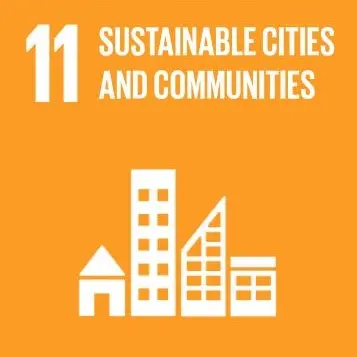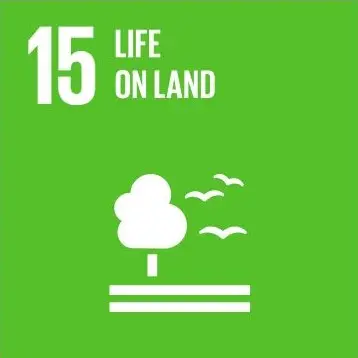Master Programme in Geospatial Information Science 120 cr
The everyday use of geospatial technology has virtually exploded in recent years. Digital maps, Google Earth and satellite-based navigation systems are no longer unfamiliar concepts. Today the demand for people with expertise in these fields is already great, and the prognosis shows that the demand will remain great in the coming years.
Credits
120 cr
Application code
HIG-19717
Application deadline
april 15, 2024
Form of education
Normal teaching
Language
English
Study time
september 2, 2024–juni 7, 2026
Prerequisites
A completed Bachelor's degree, corresponding to a Swedish Bachelor's degree (180 ECTS), or equivalent academic qualifications from an internationally recognised university.
Minimum 60 credits in a subject relevant for Geospatial Information Science (e.g. GIS, geodetic surveying, software engineering).
English language proficiency equivalent to (the Swedish upper secondary school) English course B/6.
Selection
Higher education credit
Credits
120 cr
Application code
HIG-19707
Application deadline
januari 15, 2024
Form of education
Normal teaching
Language
English
Study time
september 2, 2024–juni 7, 2026
Prerequisites
A completed Bachelor's degree, corresponding to a Swedish Bachelor's degree (180 ECTS), or equivalent academic qualifications from an internationally recognised university.
Minimum 60 credits in a subject relevant for Geospatial Information Science (e.g. GIS, geodetic surveying, software engineering).
English language proficiency equivalent to (the Swedish upper secondary school) English course B/6.
Selection
Higher education credit
About the programme
The past two decades have witnessed tremendous development of 3D visualization techniques, geographic information technologies (GIT) involving GPS, remote sensing and geographic information systems (GIS). Geographical information has become a vital part of our daily professional and private lives. The ever increasing availability of geographical information calls for professional and academic competence to study and carefully design geographical information systems and services, and likewise experts who can draw on the full potential of such systems. The potential of GIT and related systems is tremendous, which has been noted by the US department of Labor, as cited in the journal Nature, January 2004, GIT is “one of the three most important emerging research fields, along with biotechnology and nanotechnology”.
The master programme in Geospatial information science provides you high level academic training of interdisciplinary character. It integrates ideas, theories and methods from geo sciences, in its broad interpretation, and from information technology or computer science. The core of the subject is technically oriented with a focus on collecting, making searchable, modeling, calculating, visualizing, and analysing all types of geo-referenced data and information. In its social orientation, you will study how this type of information can be used to deal with concrete problems in spatial planning and decision making, and/or to simulate complex geographical phenomena and processes to reveal their underlying mechanisms (scientifically oriented use).
The programme will provide the student solid and scientifically founded knowledge, as well as problem solving skills which both broaden and deepen previous university studies, e.g. studies in computer science and geographical information technology, land surveying or spatial planning. The student will be able to carry out professional activities that are largely self-directed and independent, which is required to gain employment as an expert in activities related to the geospatial information sector and/or for further academic studies leading to research degrees, such as e.g. the PhD programme in Geospatial information science offered at HiG.
The program is interdisciplinary run and adapted to both market needs of special competence and post-graduate studies. The programme is given in English and consists of courses at both basic and advanced levels. The courses given at basic level have two purposes. The first is to offer the opportunity for progression, that is, students with insufficient knowledge in the other sub-disciplines in Geospatial information science are given the possibility to continue at advanced level. The other purpose is to offer students the opportunity to broaden knowledge in the subject’s disciplines.
Within the field of geomatics there is possibility for international exchange, for example through our Erasmus agreements. Both courses and thesis work are appropriate for study abroad. Note however, that participation in exchange may prolong your studies to some extent.
Degree
Degree of Master (120 cr)
Fields within the programme Year 1
Be a part of the technology of the future!
The two-year Master’s degree in Geospatial Information Science develops experts that are in demand on the labour market. With a history from a field related to geospatial information you will acquire an in-depth understanding of different geospatial concepts and techniques enabling you to design, create and utilize innovative GIS-based solutions in various fields of application.
The Master in Geomatics aim to help address challenges in the environment and the society. The preparation and production of spatial data, which are also important learning outcomes of the programmes, are crucial to achieve most of the 17 global development goals.
In particular the programme connects to Sustainable Cities and Communities, Life on Land and Climate Action.
A course for a professional career and research
On completion of the course you will be a sought- after candidate for highly qualified positions within both the private sector and public organisations. You will also be well prepared for further research either within our own post-graduate studies in geospatial information science or at other universities that offer GIS-related doctoral studies.
Develop and deepen your understanding
The qualifications needed for the programme are a BSc or its equivalent; including a course with at least 60 credits in a relevant subject e.g. GIS, geodetic measurement, geography, production and development of software, civil engineering and urban development. Building on your previous experience you will be able to broaden and deepen your geospatial knowledge and skills.
A growing labour market
After the course you will be able to find employment in both the private and public sectors, particularly within fields such as the environment, urban planning or disaster management.
You can also work or research at an institute of higher education within the fields of, for example, geography, geomatics , urban planning, spatial planning and urban-development programmes. Examples of suitable jobs include GIS application developers, GIS analysts, 3D geovisualization experts, scenario planners and remote sensing experts.
The programme is for both Swedish and foreign students and teaching is in English.
The programme and the UN sustainable development goals



Read more about the programme and the UN sustainable development goals
The Master in Geomatics aim to help address challenges in the environment and the society. The preparation and production of spatial data, which are also important learning outcomes of the programmes, are crucial to achieve most of the 17 global development goals.
In particular the programme connects to Sustainable Cities and Communities, Life on Land and Climate Action.
11 Sustainable Cities and Communities
Make cities and human settlements inclusive, safe, resilient and sustainable. In the different courses, societal planning and management problems are introduced and addressed through practical applications of geographical analyses and different GIS solutions. Examples of these are finding suitable planning and development project sites, analysing mobility, visualising scenarios, and identification of areas that are at risks of different hazards.
15 Climate Action
Protect, restore and promote sustainable usage of terrestrial ecosystems, sustainably manage forests, combat desertification, and halt and reverse land degradation and halt biodiversity loss.
Problem-solving skills related to the application of GIS and remote sensing techniques, as well as the usage of different geodata are taught and applied in the different courses to help understand, analyse, and manage spatial aspects of problems related to the environment and the ecosystem. Development of technical solutions, which employ GIS and/or remote sensing technique/s, to address environmental and conservation problems, is also an important part of students’ project works.
13 Life on Land
Conducting hazard, vulnerability and risks assessment, as well as modelling, are some of the integral aspects of courses in the programmes. With the high unpredictability of the magnitudes and impacts of floods, forest fires, hurricanes/typhoons, etc. associated with climate change, identification of the possible spatial extents and consequences of these hazards through modelling, mapping and visualisation constitute important knowledge that can help manage areas that are at risks of climate-induced disasters, and in mitigating risks.
This page was last updated 2024-04-17
